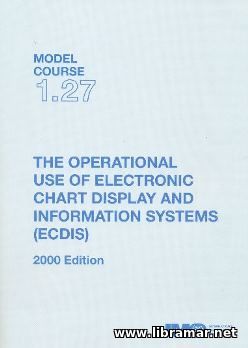 The ECDIS systems that are in common use today offer so many practical benefits if you compare this to the “old school”, i.e. conventional means of marine navigation. That is why the introduction of these systems is deservedly considered a great step forward on the way to the safer ship navigation. Now they are replacing the regular paper printed navigation charts on many vessels and this process is ongoing.
The subject systems are getting able to provide navigators with the commonly used functions and the developers keep adding new functions. The ECDIS are quire complex and technically sophisticated systems including numerous components such as the specific software, sensors, hardware, data etc. The navigators shall pay due attention to the working principles and arrangement of the system in order to avoid any malfunctioning that could lead to serious consequences.
That is the main reason for developing the present IMO Model Course which is intended to provide trainees with all information they need to know when operating the systems to make sure they will navigate with no danger to their own ship and to the other ships and marine environment. Have a good look in the content of this course and you will definitely improve your knowledge of ECDIS-aided navigation.
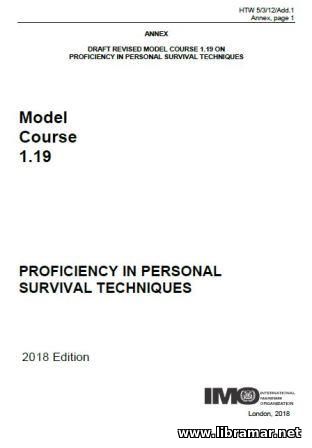 The main objective of the IMO Model Course 1.19 is to meet the minimum competence standards applicable to the seafarers with respect to the shipboard safety familiarization as well as the basic training in the personal survival techniques, in accordance with the relevant sections of the STCW Convention.
The aim is to provide them with the proper guidance and necessary information to reach the KUP, standing for the knowledge, understanding and proficiency, so that the can demonstrate the due competence in the subject techniques. Those who have successfully completed all parts of the course will be considered as having sufficient skills and knowledge for performing the survival duties.
They will be expected to show the ability to don the lifejackets and immersion suits, operate the survival craft together with all equipment installed on board, and to be proficient in the usage of the location devices, such as the radio equipment. In addition, they should be able to take all necessary actions when boarding the survival craft in order to increase the chances of survival. Recommended to every single seafarer sailing on any vessel and willing to be duly prepared to any sort of situation.
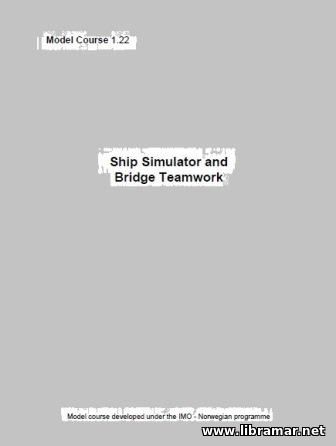 This IMO Model Course was developed to cover the main aspects of bridge teamwork and ship simulator, as it is implied by the title. The students who have completed the course will be considered as having sufficient experience in ship handling under different conditions. They will be able to effectively contribute to the bridge team work when the maneuvering of the ship takes place, including both normal and emergency cases.
They will be duly familiarized with the use of the shipboard diesel engines, and get better understanding of the different effects on ship, such as the shallow water effect, current and wind effects, narrow channels, bank effect etc. They will also develop the required awareness of the critical significance of the voyage planning and maneuvering and get themselves duly prepared in shipboard communication style and mental model of the passage.
In addition to that, the efficient ship bridge procedures and team work using the good ship handling and watchkeeping practices will be understood which will contribute to the safety of navigation. Note that the trainees are expected to possess some six month ship sailing experience before getting enrolled in the subject course.
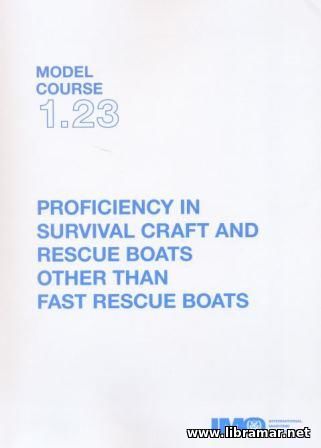 The IMO Model Course 1.23 devoted to the proficiency of personnel in rescue boats and survival craft excluding FRB. Traditionally, the course starts with the chapters where some introduction, safety and general information is given, including drills and emergency situation. The actions that shall be taken by the crew members during the ship abandon are discussed in the next chapter.
The types and construction of the shipboard lifeboats, rescue boats and liferafts are covered together with the relevant launching arrangements, and this also includes the free-fall lifeboats and MES, standing for the marine evacuation systems. Due attention has been paid to the engines installed on the lifeboats and rescue boats, and the systems, such as the starting system, cooling system, fire extinguishing and water spray systems, battery system etc.
The radio equipment has been discussed separately, and same applies to the helicopter rescue and first aid techniques and arrangements. Then the students will proceed to the drills in launching/recovering of all above stated survival craft. Finally, several practical exercises are provided for the progress tracking and evaluation.
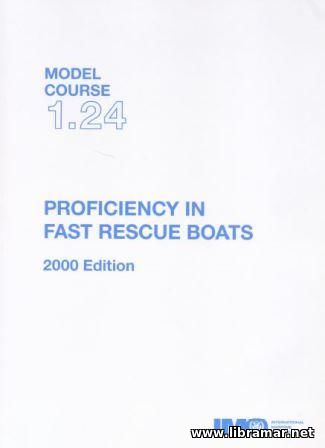 Here is another IMO model course, this one dealing with the shipboard rescue boats. The trainees will start with the construction and outfitting of the FRC (fast rescue boats) installed on board seagoing vessels, including their equipment, and then proceed to particular characteristics of the boats and their facilities.
The next section of the course is dealing with the equipment including the safety and navigation items, as well as the emergency equipment, since it is mandatory to have a thorough knowledge of what shall be carried on board and how it shall be used. The necessary safety precautions have been addressed in a separate section and shall be taken into account during the launching and recovery of the boats; you will also have the information on the drills there.
The remaining sections of this first half cover the handling of the FRC including procedure for its righting in case of capsizing, readiness of the boat and equipment, search and rescue etc. The second part is devoted to the operation of the engine, covering all types of engines, such as the inboard and outboard ones, water-jet propulsion, together with the associated drills.
The trainees who have successfully completed the course, will have adequate knowledge of the above stated items and therefore considered prepared for the handling of the shipboard rescue boats.
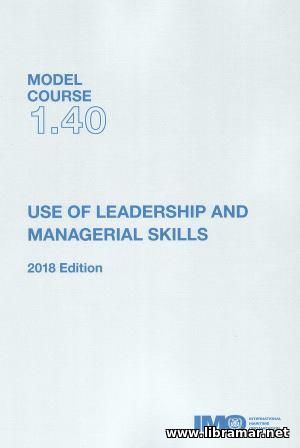 The main aim of the present IMO Model Course is to provide all participants with the information and professional guidance necessary to gain the due KUP, standing for the knowledge, understanding and proficiency so that they can achieve the appropriate outcomes, demonstrating the competence standards for the seamen who are assigned shipboard duties.
The content of the training course has been designed with the specific objective of enabling them to get better in the management and leadership. The trainees, who have successfully completed the course, will be able to demonstrate their ability to properly and efficiently manage the shipboard personnel and perform training on board, and apply the relevant maritime regulations including the national and international conventions, recommendations and codes.
They will also know how to apply the techniques of the recourse management and decision making. Apart from that, the document will provide them with the information on the development and implementation of the operation procedures commonly used on board ships as a standard. The course is aimed at the seamen at officers in charge level and is highly recommended to them.
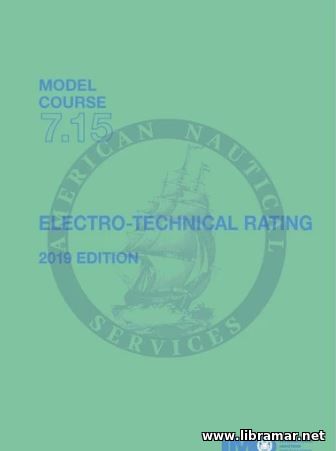 The core objection of the present IMO Model Course 7.15 is to meet the competency standards for the electro-technical ratings for such functions as maintenance and repair of the shipboard electric equipment, control engineering, electronical engineering etc. as per the STCW Code, table A-III/7. The trainees will be given all the guidance they would need to obtain the understanding of the material included in the course, and reach the training goals.
By the end of the training, they will be able to demonstrate their competence. The first function implies using the electrical equipment safely, and contributing to the monitoring of the ship’s machinery and systems, as well as using the measurement equipment and tools for fault finding.
The maintenance and repair function is self-explanatory, and the last one is control over the ship operation and also caring for the people on board by applying all necessary health and safety precautions; the protection of the marine environment is also covered by this third function. Apart from the official training, the publication can be used by the students and even for the self-studying, as the material is presented in a very reader-friendly manner.
 The IMO Model Course 3.04 deals with the surveys of the shipboard electrical installations. It opens with the section covering the general requirements for survey and certification, explaining how exactly the subject requirements are connected with the provisions of the relevant IMO conventions, while the second section deals with the survey preparation, including all measures that shall be taken prior to commencements of the surveys, use of the associated equipment and tools, hazards involved etc.
The electrical installations are covered in the third section, where the main technical principles that govern the layout of the shipboard electrical systems, are explained in detail, since the sound understating is a prerequisite to any inspection. There are also special requirements to be considered as necessary when dealing with the specific ship categories.
Numerous additional requirements are applicable to the ships with the unattended machinery spaces, since such vessels would normally have the appropriate automation systems installed. Then, the course also provides information on the relevant electrical survey procedures, focusing on their practical aspects, including both traditional and the newly implemented alternative methods.
|







